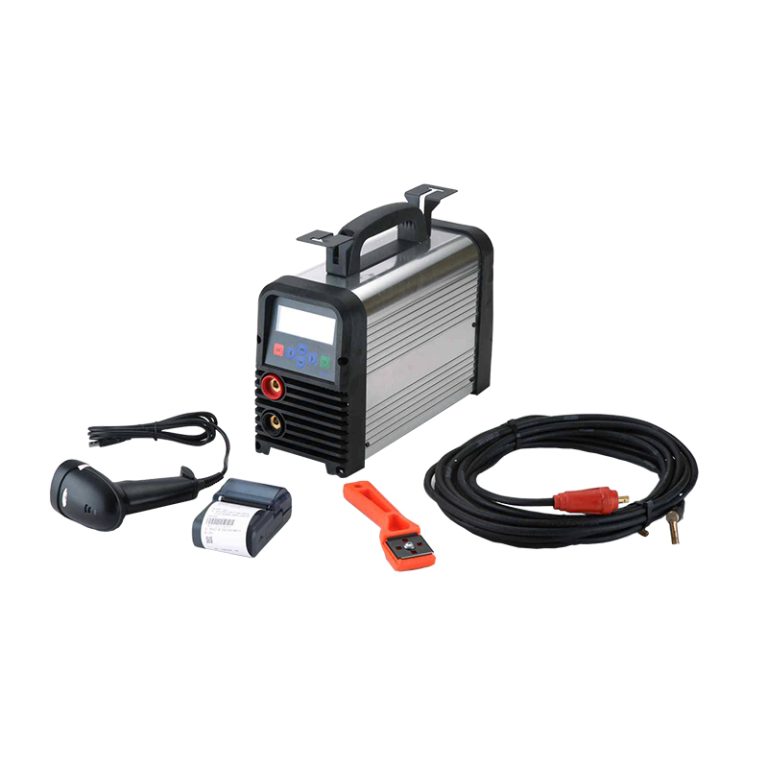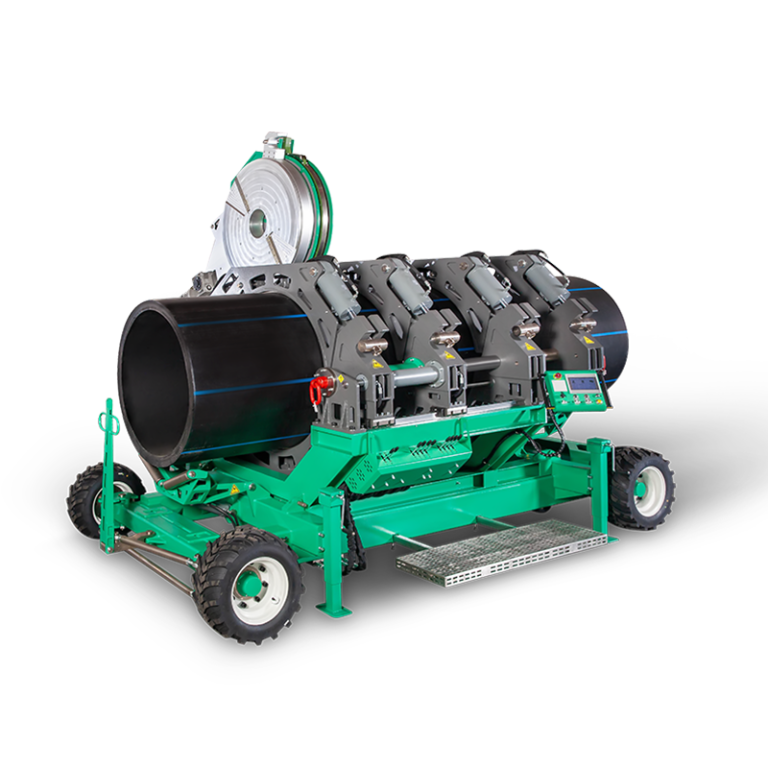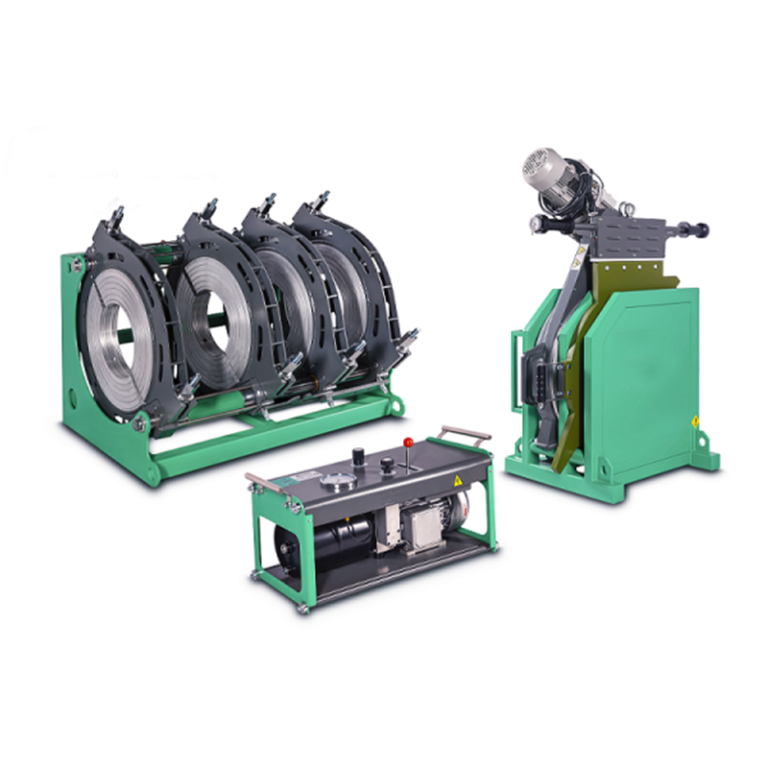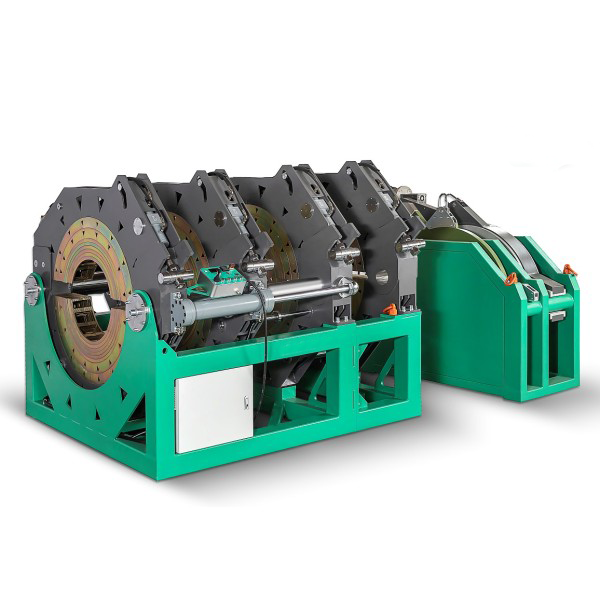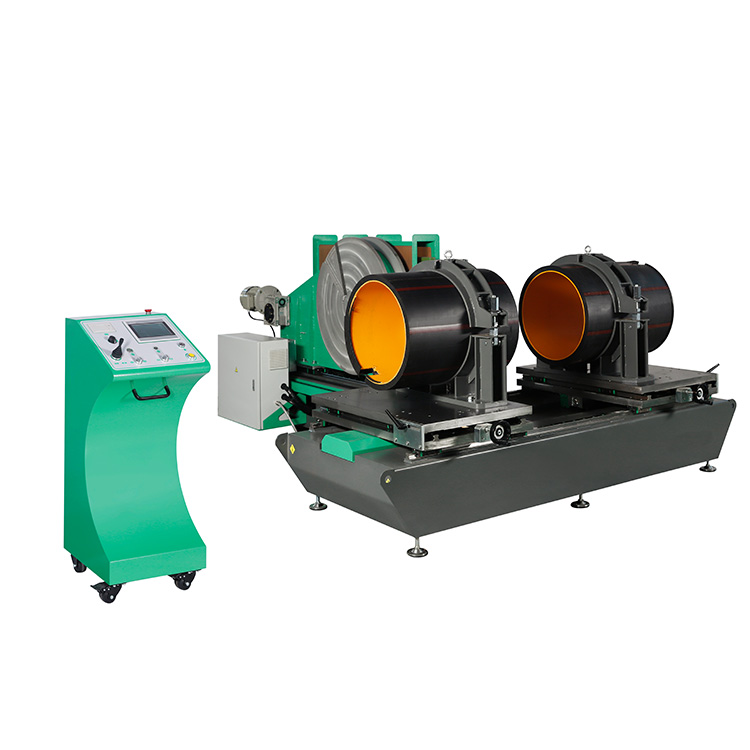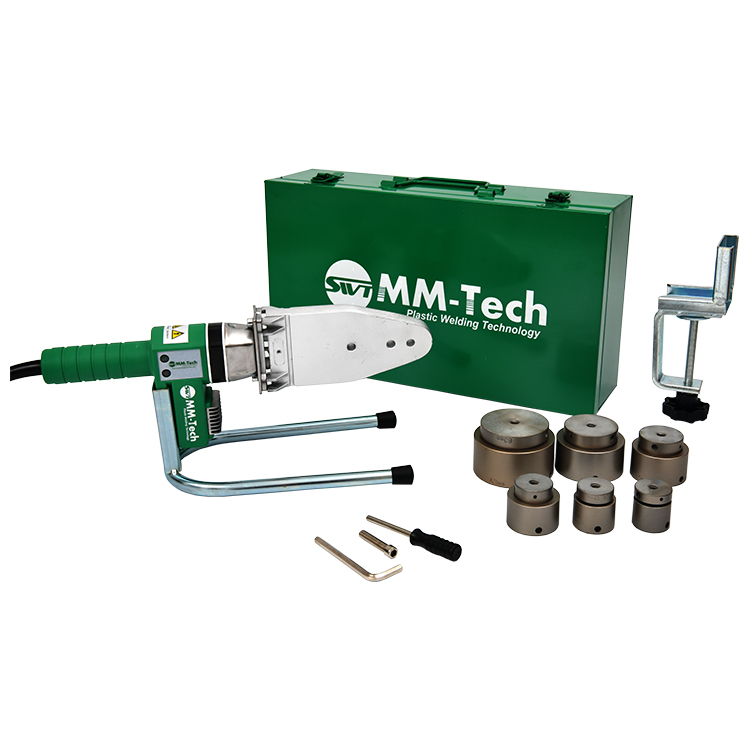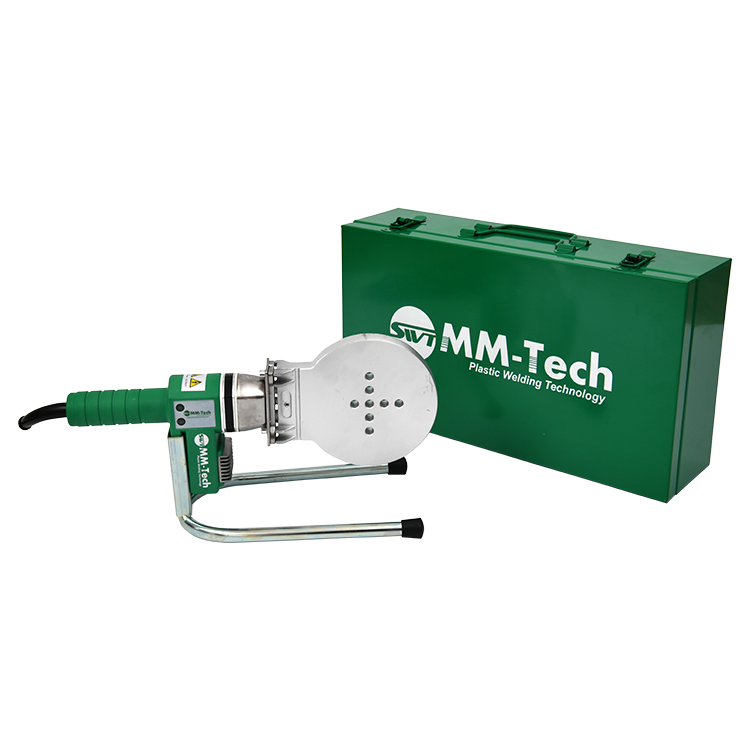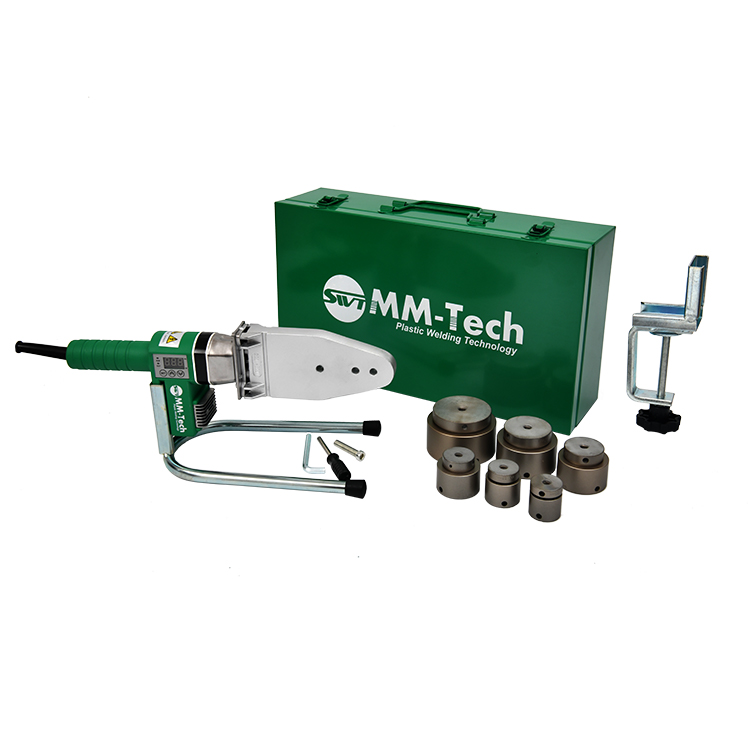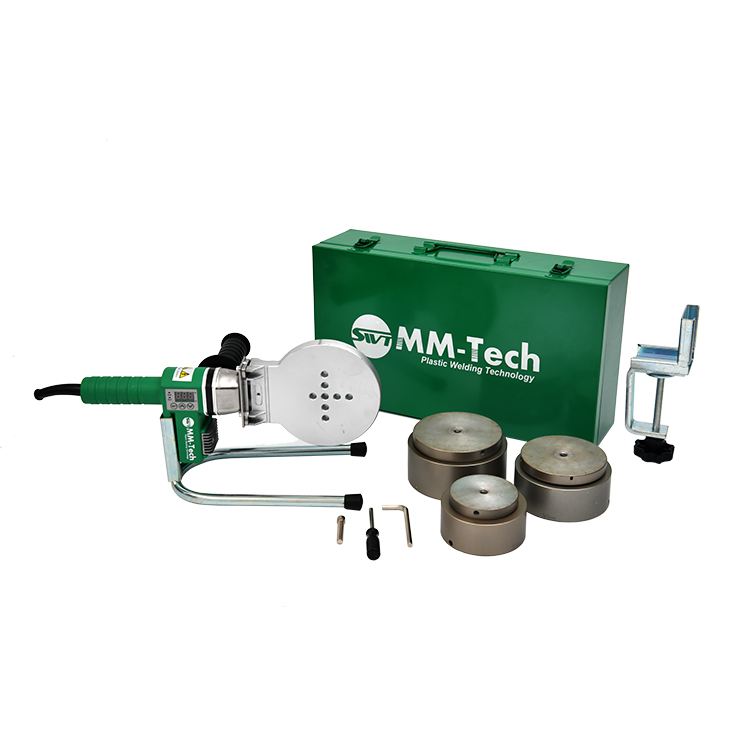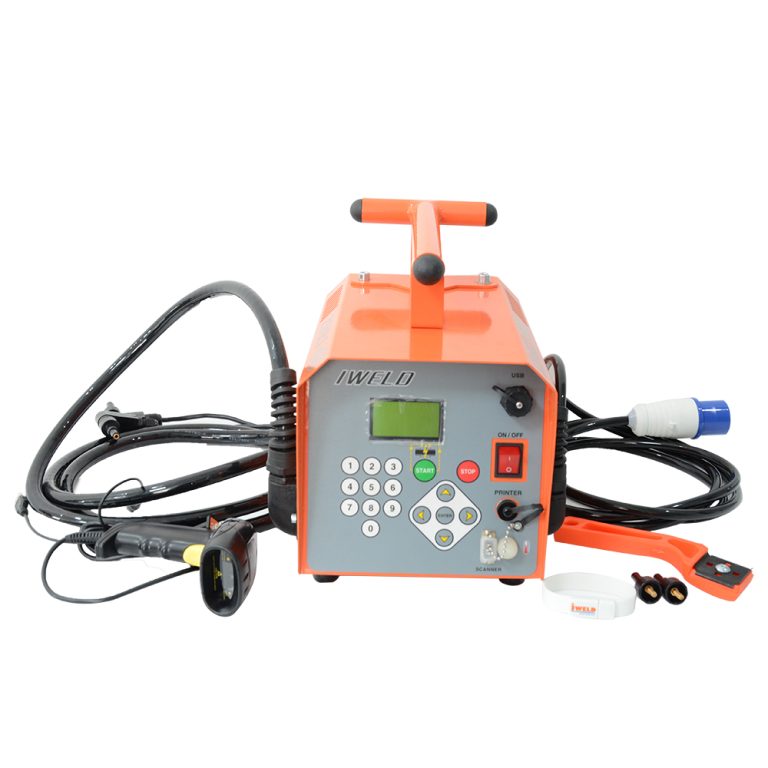Fusion Knowledge
HDPE pipe features
High Density Polyethylene (HDPE) pipes and fittings are gaining popularity among engineers, contractors and customers for applications in municipal, industrial, energy and many other sectors. As a thermoplastic, HDPE can be melted and remolded. It’s known for its ruggedness, flexibility, durability and outstanding resistance to chemicals and environmental stress cracking, making it suitable for diverse, demanding uses.
The use of hot-melt connection technology creates a strong fusion joint that is comparable to the strength of the pipe itself, eliminating potential leakage points and enabling long-term leak-free operation with virtually no maintenance.
Resistant to a wide range of chemicals such as hydrogen sulfide gas, salts, alkalis, most acids, and common organic solvents, it is stable in the pH range of 2 to 12 and will not rust, corrode, or degrade, making it suitable for a wide range of industrial, mining, and outdoor applications.
More durable and flexible than other brittle piping materials (e.g., PVC, ductile iron), with a bend radius of up to 20 times the diameter of the pipe, it can adapt to imperfect installation paths, and is resistant to impact and fatigue, allowing it to withstand high flow rates and pressure fluctuations.
Withstands fluid and ambient temperatures from -40°F to 140°F, with long term resistance to 140°F and temporary resistance to temperatures up to 180°F, and can withstand repeated freeze-thaw cycles without damage.
Lightweight, about one-eighth the weight of steel, making it easier to handle, transport and install; can be installed using trenchless techniques, reducing disruption to the surrounding environment and the amount of construction repairs; long cut lengths and fast installation speeds result in low overall project costs, low maintenance costs and a service life of up to 100 years.
HDPE pipe has high tensile strength; low coefficient of friction to achieve very high flow rate, smooth surface to increase flow, reduce resistance and turbulence, improve pumping efficiency and reduce pumping costs.
HDPE Applications
Water and Drainage Piping
Oil and gas gathering
Natural gas transmission
Mining and industry
Sewage Pipelines
Geothermal heating and cooling
Butt Fusion Welding Process
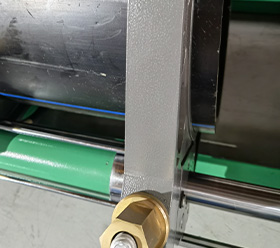
Fixed HDPE pipe
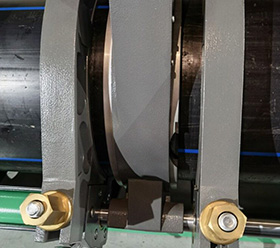
Cutting HDPE pipe to ensure smooth butt joints
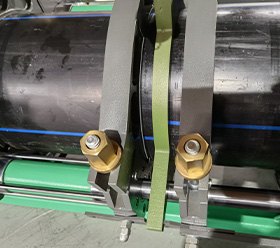
Heating HDPE pipe
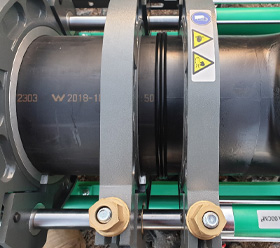
Butt jointing of HDPE pipes at a predetermined pressure
Latest Products
Our services span from professional pre-sales consultations to one-on-one after-sales support, and from product startup guidance to efficient return handling, ensuring a seamless and high-quality experience for customers at every stage of interaction with us.
HOW TO CALCULATE
To achieve proper fusion of thermoplastic pipes and guarantee weld quality, operators must determine the appropriate fusion pressure and time in accordance with the welding standards specified by the project.
You can reach out to our sales team to obtain the welding table for MM – Tech butt fusion machines. Currently, we’re developing the MM – Tech fusion pressure calculator. In the meantime, you may also use other fusion pressure calculator apps to calculate the required pressure and time.
This page outlines a manual method for calculating fusion pressure and time. We’ll take the standard ISO21307:2017 as an example to illustrate the process.
EXAMPLE
Standard: ISO21307:2017 Single Low-pressure
Machine: MM-Tech Butt Fusion Machine SWT-V315
Pipe: OD315, SDR17
Step 1
Check below illustration for single low-pressure fusion jointing cycle.

Key
X time
Y pressure
P1 bead-up pressure
P2 heat soak pressure
P3 fusion jointing pressure
t1 bead-up time
t2 heat soak time
t3 heater plat removal time
t4 time to achieve fusion jointing pressure
t5 cooling time in the machine under pressure
t6 cooling time out of the machine
Step 2
Check out the formula of the gauge pressure calculation
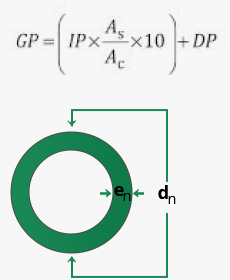
Where
GP is the gauge pressure (bar);
IP is the interfacial pressure (MPa);
AC is the total effective piston area, given by the manufacturer of butt fusion machine (mm2)
AS is the interfacial surface area (mm2)
DP is the drag pressure
Note: The interfacial pressure is the amount of force per unit of pipe area required to butt fuse the pipe or fitting ends.
Note: The interfacial pressure is the amount of force per unit of pipe area required to butt fuse the pipe or fitting ends.
Step 3
Refer to below tables for phases , parameters and values for single low-pressure fusion jointing procedure

Note:
1.(en + 3) This is the cooling time for the butt joint when still in the machine and under pressure. Cooling time may be shortened and should be lengthened depending on ambient temperature (approximately 1% per 1℃)
2.(d) A cooling time out of the machine and before rough handling maybe recommended.
Step 4
Now using all information and formula above we will calculate all values by maximum
en = dn/ SDR = 315mm / 17 = 18.52 mm
P1 = P3 0.19 x {π x (dn-en) x en}÷2000 x 10} + 5 (for example) = 21 bar
P2 DP = 5 bar
t1 = bead-up size 0.5 + 0.1 x 18.52mm = 2.3 mm
t2 (13.5 ± 1.5) x 18.52 = 278 s
t3 10 s
t4 3 + 0.03 x 315 = 12.5 s
t5 0.015 x 18.522– 0.47 x 18.52 + 20 = 16 min
t6 d

